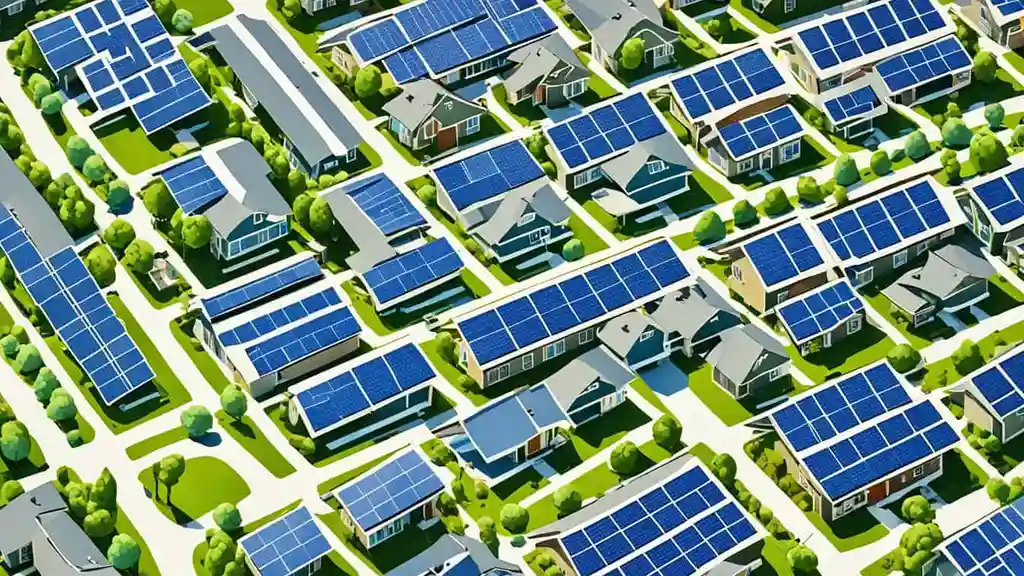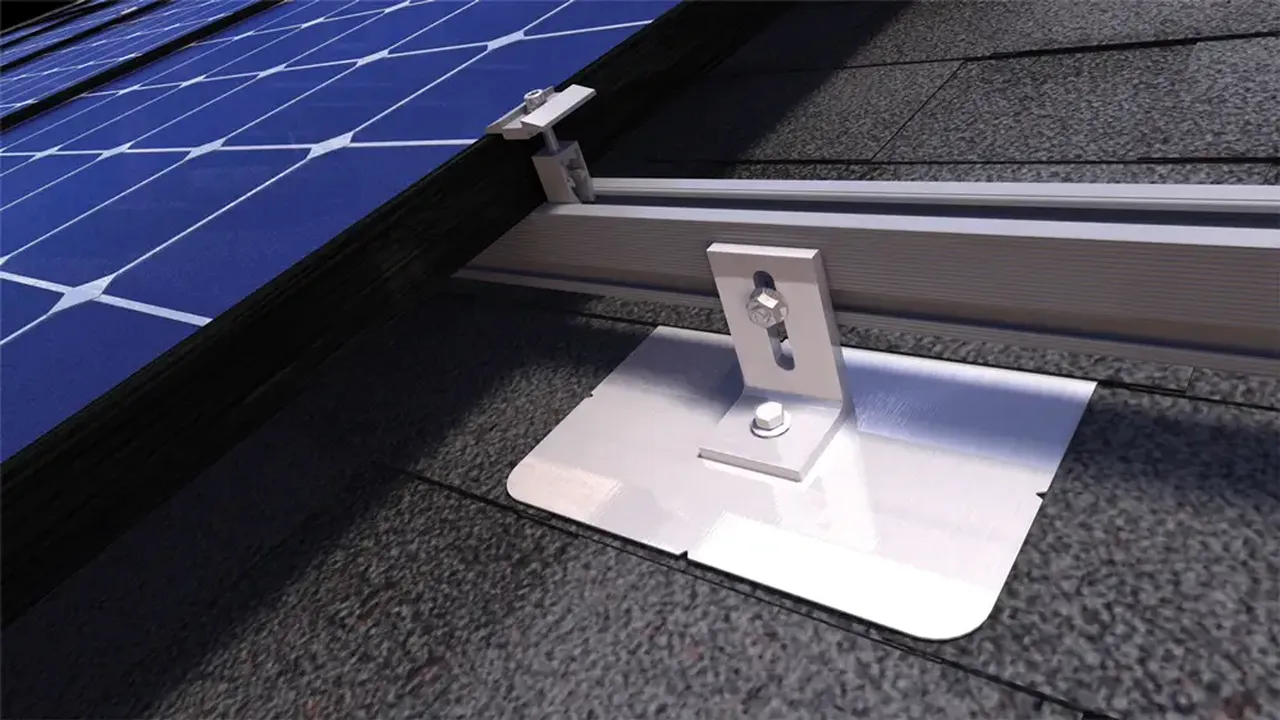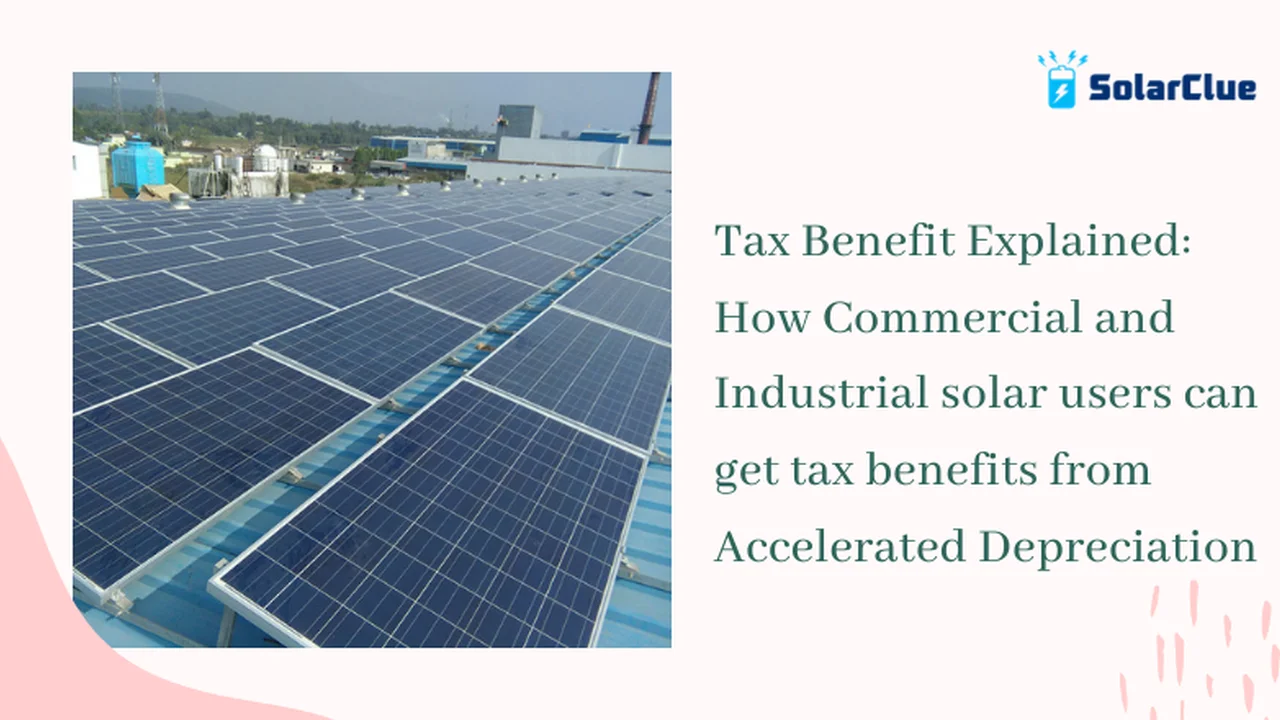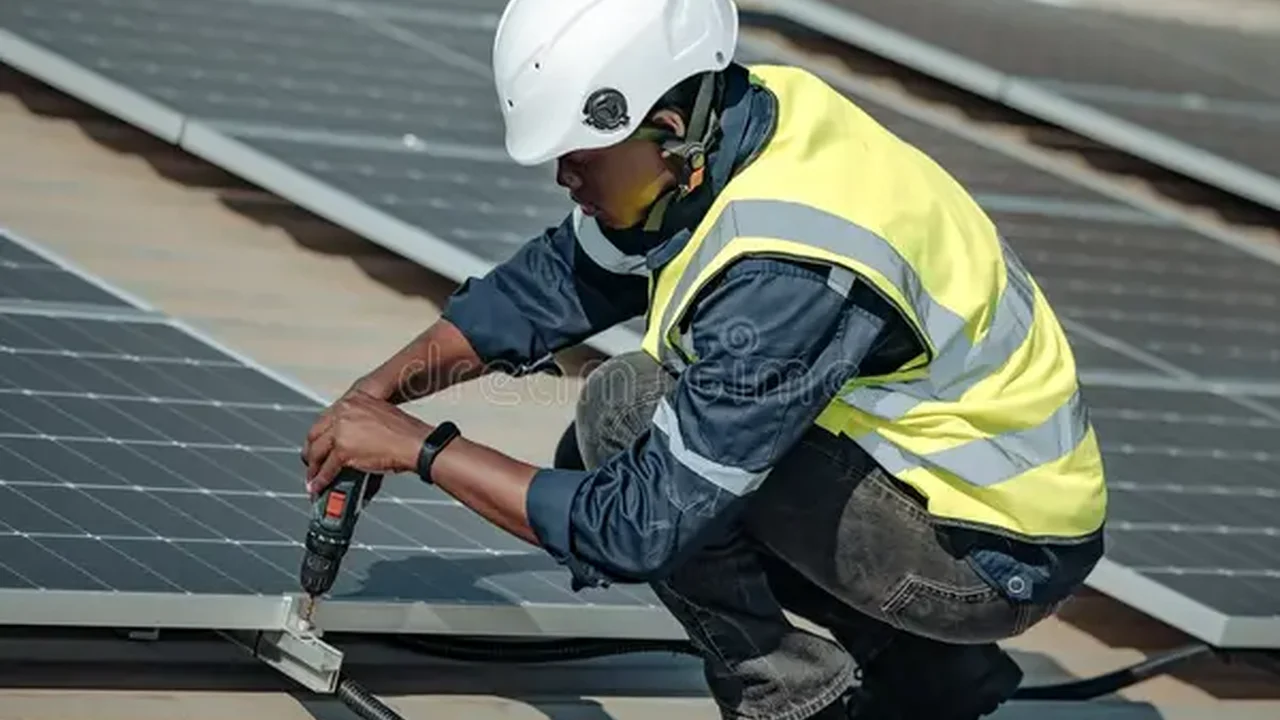Solar Panel Hot Spots: Identifying and Addressing Them
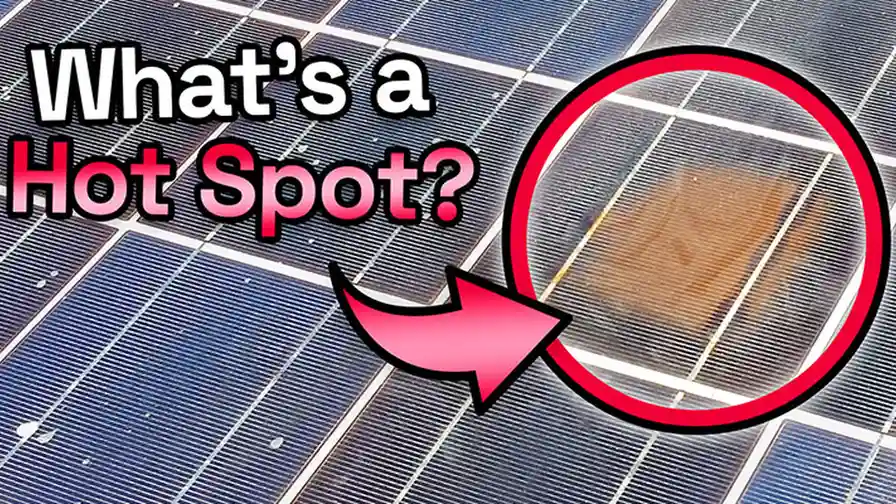
Understanding Solar Panel Hot Spots What Are They and Why Do They Matter
Alright, let's talk about solar panel hot spots. Ever noticed a weirdly warm spot on your solar panel? That might be a hot spot. Basically, it's a localized area on a solar panel that gets significantly hotter than the surrounding area. We're talking potentially damaging heat here, folks!
Why does it matter? Well, excessive heat isn't good for anything, especially sensitive electronics. Hot spots can reduce the efficiency of your solar panel, shorten its lifespan, and in severe cases, even cause fires. Nobody wants that!
So, what causes these pesky hot spots? Several things can contribute:
- Shading: This is a big one. Even partial shading from a tree branch, chimney, or bird droppings can create a hot spot. When part of a cell is shaded, it can't produce electricity, and instead, it acts like a resistor, dissipating energy as heat.
- Manufacturing Defects: Sometimes, it's just bad luck. Manufacturing flaws in the solar cells themselves can lead to uneven current flow and, you guessed it, hot spots.
- Dirt and Debris: A build-up of dirt, dust, leaves, or other debris can block sunlight and cause localized heating, similar to shading.
- Cell Mismatches: Solar panels are made up of many individual cells. If some cells are producing less power than others (due to age, damage, or manufacturing variations), they can become hot spots.
- Damaged Cells: Cracks, scratches, or other physical damage to a solar cell can disrupt its ability to generate electricity and lead to heat build-up.
- Poor Ventilation: If your solar panels are installed in a location with poor ventilation, the heat generated by the panels can't dissipate effectively, increasing the risk of hot spots.
Identifying Solar Panel Hot Spots Using Thermal Imaging and Visual Inspection
Okay, so how do you find these hot spots? There are a couple of methods:
- Thermal Imaging: This is the most reliable way. A thermal imaging camera (also called an infrared camera) detects and displays differences in temperature. Hot spots will show up as bright, hot areas on the thermal image. You can hire a professional to do this, or, if you're serious about solar maintenance, you can invest in your own thermal imaging camera. We'll talk about specific models later.
- Visual Inspection: Sometimes, you can spot hot spots with your own eyes. Look for discoloration, burn marks, or melted areas on the surface of the panel. However, this method is only effective for severe hot spots. Often, the damage is happening on a microscopic level before it's visible.
Safety First! If you're going to inspect your solar panels yourself, make sure you take proper safety precautions. Turn off the system at the breaker box, wear appropriate safety gear (gloves, eye protection), and be extremely careful when working on a roof. If you're not comfortable with heights or electrical work, leave it to the professionals.
Addressing Solar Panel Hot Spots Cleaning Shading and Repair Strategies
Alright, you've found a hot spot. Now what? The solution depends on the cause.
- Cleaning: If the hot spot is caused by dirt or debris, a good cleaning is in order. Use a soft brush or sponge and mild soap and water. Avoid harsh chemicals or abrasive cleaners, as they can damage the panels. Rinse thoroughly with clean water. Consider investing in a specialized solar panel cleaning solution.
- Shading Removal: If shading is the culprit, try to remove the source of the shade. Trim tree branches, relocate antennas, or clean off bird droppings. If the shading is unavoidable, you might consider repositioning the solar panels or installing micro-inverters to mitigate the impact of shading on individual panels.
- Repair or Replacement: If the hot spot is caused by a manufacturing defect, damaged cell, or other internal problem, the panel may need to be repaired or replaced. Contact a qualified solar panel installer or repair technician to assess the damage and recommend the best course of action. Minor repairs might be possible, but in many cases, replacement is the only option.
Recommended Products for Solar Panel Maintenance and Hot Spot Detection
Okay, let's talk about some specific products that can help you maintain your solar panels and detect hot spots. Remember, prices can vary, so always check with retailers for the most up-to-date information.
Thermal Imaging Cameras for Solar Panel Inspection Affordable Options
These are invaluable for detecting hot spots. Here are a few options, ranging from budget-friendly to more professional-grade:
- FLIR ONE Pro LT: This is a smartphone attachment that turns your phone into a thermal camera. It's relatively affordable (around $300-$400) and easy to use. It's great for basic hot spot detection and general home inspections. The image quality isn't the best compared to dedicated cameras, but it's a good entry-level option. Use case: quick checks of your solar panels a few times a year.
- FLIR C3-X Compact Thermal Camera: A step up from the FLIR ONE Pro LT. It's a standalone thermal camera with a larger screen and better image quality. It's still relatively compact and easy to carry around. Price range: $600-$800. Use case: More detailed inspections, identifying smaller hot spots, and documenting your findings.
- FLIR E8 Pro: For serious solar panel owners or professionals, the FLIR E8 Pro offers excellent image quality, a wide temperature range, and advanced features like MSX (Multi-Spectral Dynamic Imaging), which enhances thermal images with visual details. This is a significant investment (around $4000-$5000), but it provides the most accurate and detailed thermal information. Use case: Professional-level solar panel inspections, identifying subtle temperature differences, and generating detailed reports.
- HIKMICRO Pocket2: A compact and user-friendly thermal camera designed for various applications, including solar panel inspection. It features a high-resolution infrared detector, a wide temperature range, and a built-in visual camera. The Pocket2 is known for its portability and ease of use, making it suitable for both professionals and DIY enthusiasts. Price range: $500-$700. Use case: Regular inspections, identifying potential issues early, and ensuring optimal solar panel performance.
Solar Panel Cleaning Solutions and Tools Gentle and Effective Options
Keeping your panels clean is crucial. Here are a few recommended products:
- HQST Solar Panel Cleaning Kit: This kit includes a telescoping pole, a soft brush, and a squeegee. It's designed specifically for cleaning solar panels and is safe to use on all types of panels. Price: Around $100-$150. Use case: Regular cleaning of solar panels to remove dirt, dust, and debris.
- Windy City Cleaning Solutions Solar Panel Cleaning Soap: This is a biodegradable and non-toxic cleaning solution that's specifically formulated for solar panels. It's gentle on the panels but effective at removing dirt and grime. Price: Around $20-$30 per gallon. Use case: Cleaning solar panels in areas with hard water or stubborn dirt.
- Simple Green Oxy Solve House and Siding Cleaner: While not specifically designed for solar panels, this cleaner is safe to use on them and is effective at removing dirt and mildew. Dilute it according to the instructions. Price: Around $10-$15 per gallon. Use case: Cleaning solar panels in areas with mold or mildew growth. Always test in an inconspicuous area first.
- Deionized Water System: For the ultimate clean, consider a deionized water system. Deionized water is free of minerals and impurities, which can leave streaks and spots on your solar panels. These systems can be expensive (ranging from a few hundred to several thousand dollars), but they provide the best possible cleaning results. Use case: Professional solar panel cleaning services or homeowners who want the cleanest possible panels.
Multimeters for Solar Panel Testing Checking Voltage and Current
A multimeter can be helpful for diagnosing solar panel problems, although it won't directly detect hot spots. It can help you identify cells that aren't producing enough voltage or current.
- Fluke 117 Electricians Multimeter: A reliable and accurate multimeter that's suitable for a wide range of electrical testing tasks. It can measure voltage, current, resistance, and continuity. Price: Around $200-$250. Use case: Troubleshooting solar panel problems, checking voltage and current levels, and verifying connections.
- Klein Tools MM400 Multimeter: A more affordable multimeter that's still accurate and reliable. It's a good option for homeowners who want a basic multimeter for occasional solar panel testing. Price: Around $50-$75. Use case: Basic solar panel testing, checking voltage and current levels, and verifying connections.
Comparing Thermal Imaging Cameras for Solar Panel Hot Spot Detection
Choosing the right thermal imaging camera depends on your budget and needs. Here's a quick comparison:
| Feature | FLIR ONE Pro LT | FLIR C3-X | FLIR E8 Pro | HIKMICRO Pocket2 |
|---|---|---|---|---|
| Price | $300-$400 | $600-$800 | $4000-$5000 | $500-$700 |
| Image Quality | Basic | Good | Excellent | Good |
| Ease of Use | Very Easy | Easy | Moderate | Very Easy |
| Portability | Excellent | Good | Moderate | Excellent |
| Features | Basic thermal imaging | MSX, wider temperature range | MSX, wider temperature range, advanced analysis tools | High-resolution, wide temperature range |
| Use Case | Quick checks, basic hot spot detection | Detailed inspections, smaller hot spot detection | Professional-level inspections, detailed reports | Regular inspections, early issue detection |
Preventing Solar Panel Hot Spots Regular Maintenance and Best Practices
The best way to deal with hot spots is to prevent them in the first place. Here are some tips:
- Regular Cleaning: Clean your solar panels regularly to remove dirt, dust, and debris. How often you need to clean them depends on your location and the amount of pollution in the air. In general, cleaning them every 6-12 months is a good idea.
- Shading Management: Trim tree branches, relocate antennas, and clean off bird droppings to minimize shading.
- Professional Inspections: Have your solar panels inspected by a qualified technician every few years. They can identify potential problems before they become serious.
- Proper Installation: Make sure your solar panels are installed correctly and that they have adequate ventilation.
- Monitor Performance: Keep an eye on your solar panel system's performance. If you notice a sudden drop in power output, it could be a sign of a hot spot or other problem.
The Importance of Professional Solar Panel Maintenance Services
While you can do some solar panel maintenance yourself, it's often best to leave it to the professionals. They have the tools, experience, and expertise to properly inspect, clean, and repair your solar panels. They can also identify potential problems that you might miss.
A professional solar panel maintenance service can:
- Perform thermal imaging inspections to identify hot spots.
- Clean your solar panels safely and effectively.
- Repair or replace damaged solar panels.
- Optimize your solar panel system for maximum performance.
Investing in professional solar panel maintenance can extend the lifespan of your system and ensure that it's operating at peak efficiency.
DIY vs Professional Solar Panel Maintenance Weighing the Options
Deciding whether to handle solar panel maintenance yourself or hire a professional depends on your comfort level, skills, and the complexity of the task. Here's a breakdown to help you choose:
DIY Solar Panel Maintenance
Pros:
- Cost Savings: You'll save money on labor costs.
- Convenience: You can perform maintenance on your own schedule.
- Personal Satisfaction: You'll gain a better understanding of your solar panel system.
Cons:
- Safety Risks: Working on a roof can be dangerous.
- Limited Expertise: You may not have the knowledge or skills to properly diagnose and repair problems.
- Equipment Costs: You may need to purchase specialized tools, such as a thermal imaging camera.
Professional Solar Panel Maintenance
Pros:
- Expertise: Professionals have the knowledge and experience to properly maintain your solar panels.
- Safety: Professionals have the training and equipment to work safely on roofs.
- Comprehensive Services: Professionals can provide a wide range of services, including thermal imaging inspections, cleaning, and repairs.
Cons:
- Cost: Professional services can be expensive.
- Scheduling: You'll need to schedule appointments with a professional.
When to DIY:
- Simple cleaning tasks
- Visual inspections for obvious damage
- Minor shading removal
When to Hire a Professional:
- Thermal imaging inspections
- Repairs to damaged solar panels
- Complex shading removal
- Any task that you're not comfortable performing yourself
Future Trends in Solar Panel Maintenance Predictive Maintenance and Automation
The future of solar panel maintenance is likely to be driven by predictive maintenance and automation. Here are some trends to watch:
- Drone Inspections: Drones equipped with thermal imaging cameras can quickly and efficiently inspect large solar panel arrays.
- AI-Powered Diagnostics: Artificial intelligence algorithms can analyze data from solar panel systems to predict potential problems before they occur.
- Robotic Cleaning: Robots can automatically clean solar panels, reducing the need for manual labor.
- Remote Monitoring: Advanced monitoring systems can track the performance of solar panels in real-time, allowing for early detection of problems.
These technologies will make solar panel maintenance more efficient, cost-effective, and reliable.
:max_bytes(150000):strip_icc()/277019-baked-pork-chops-with-cream-of-mushroom-soup-DDMFS-beauty-4x3-BG-7505-5762b731cf30447d9cbbbbbf387beafa.jpg)



